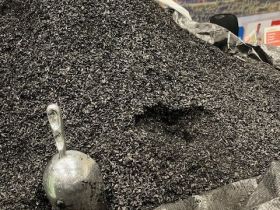Global biochar industry to earn $3b revenue by 2025: IBI
Quantum Commodity Intelligence – The global biochar industry is on track to generate nearly $3 billion in annual revenue by the year 2025, said the International Biochar Initiative (IBI) in the first sector-wide report published in nearly 10 years.
IBI, the biochar industry's main trade group, published its '2023 Global Biochar Market Report' on Monday, based on a survey of more than 1,000 industry sources, weighed by production capacity.
The biochar industry generated a record $610 million in revenue in 2023, split between producers ($330 million), equipment manufacturers ($241 million) and distributors ($39 million), according to estimates compiled by experts Wendy Lu Maxwell-Barton and Myles Gray.
On current plans, revenue is expected to grow to nearly $3 billion by 2025 propelled by increased awareness and investments in carbon dioxide removals (CDRs).
And yet, IBI estimates that more than 50% of biochar producers globally do not generate any biochar carbon removal (BCR) credits at the moment.
One reason is obvious: carbon crediting frameworks do not typically accept schemes that were in operation before the standard was implemented in the name of 'additionality', the concept that carbon finance is needed to underwrite a project.
The high cost of certification and existing marketplaces may also play a part.
In 2023, the highest carbon credit participation rate was seen in South America and Africa, which have underdeveloped markets for biochar.
"Relatively low labour costs in these regions, paired with BCR credit prices that are relatively unaffected by geographic origin appear to create viable business models in these regions that rely nearly exclusively on BCR credit revenue," said IBI.
"Conversely, large amounts of biochar in Asia, Europe, and North America is produced by companies that generate no carbon credit revenues at all," it said.
"It is possible that these regions, which have been among the earliest adopters of biochar production, are home to producers that were operating before BCR credits became available," IBI added.
91% growth
The lobby group estimates global production of biochar of 350,000 tonnes (t) in 2023, a growth of 91% per year on average since 2021.
"As the industry matures the annual growth rate will likely stabilise at a lower rate, with a clear pathway for biochar carbon removal to sequester one gigatonne of carbon dioxide by 2040 with just a 54% compound annual growth rate," it said.
As of 2023, more than half of survey respondents said they had built their facilities themselves, underscoring the relative immature state of the biochar industry, but that is expected to change dramatically over the next few years.
The analysis shows an expected rise in the contribution of stationary rotary kilns and batch reactors produced by licensed manufacturers on dramatically higher output, rather than the portable kilns and mobile carbonisers that are more common in the developing world.
IBI said the result may have been skewed by lower participation rates to its survey in those regions, but still thinks it is a trend.
"The co-benefits of such production systems, such as reduced particulate emissions from open-pile burning are substantial, so supporting these small scale systems, even if they represent a shrinking share of global production, should remain a priority," said IBI.
It added that biochar usage remains a key hurdle globally, echoing comments made by the European Biochar Initiative (EBI) consortium last week.
"Notably, awareness of, and demand for, physical biochar is both a leading growth factor and a leading obstacle to future growth, clearly indicating that increasing both should be a key focus for biochar industry organisations," it said.
"Underdeveloped end-use markets, particularly in agriculture, are producing growth headwinds that will be crucial to address to support rapid biochar industry scaling," IBI concluded.

